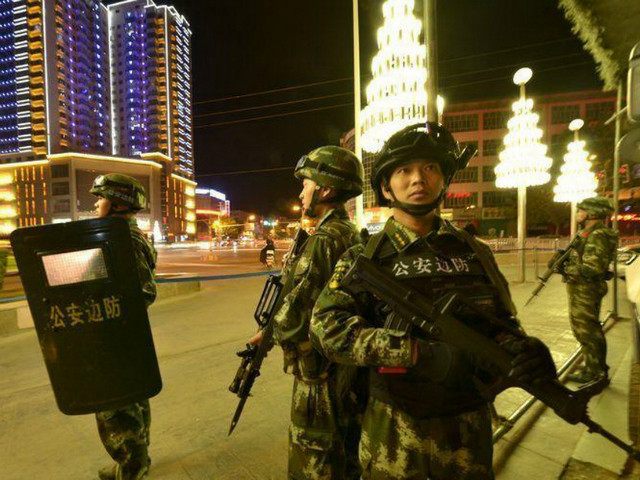Taliban and Chinese Uighur jihadists are reportedly increasing their presence in a province in northern Afghanistan that borders Tajikistan, Pakistan, and China.
“We are concerned that an estimated 200 foreign fighters are active. They include citizens of Uzbekistan, members of the Uighur Muslim minority from China, and citizens of Tajikistan,” Mohammad Dawlat Khawar, the governor of Badakhshan’s Warduj district, told Gandhara, a component of Radio Free Europe/Radio Liberty (RFE/RL).
“The militants collect one-tenth of wheat crops, walnuts, and other produce in the name of collecting an Islamic tax, Usher. They also frequently force villagers to feed them,” added Abdul Wahab Majruh, a schoolteacher whom the Taliban forced out of his home in Badakhshan.
China, Islamabad’s major ally, has rebuked U.S. assertions that Pakistan harbors terrorists who operate in Afghanistan, namely the Afghan Taliban and their Haqqani Network allies.
The most prominent jihadists groups in the region — the Taliban, al-Qaeda, the Haqqani Network, the Islamic State (ISIS/ISIL), and the Uighur’s East Turkestan Islamic Movement (ETIM) – maintain strongholds along the Afghanistan-Pakistan border.
According to the U.S.-China Economic and Security Review Commission, China faces a significant terrorist threat from the Afghanistan-Pakistan region, which the Pentagon has repeatedly stressed is home to the “highest concentration” of U.S.-designated terrorist groups.
Gandhara reports that the Taliban is increasingly conquering territory in Afghanistan’s Badakhshan, home to Uighur jihadists from neighboring China’s Muslim-majority province of Xinjiang.
“The Taliban control large swathes of rural Badakhshan. Their growing influence there is now prompting concerns that the province will become a bastion for regional terrorism because it borders Pakistan, China, and Tajikistan,” notes the news outlet.
Mohammad Dawlat Khawar, the governor of Badakhshan’s Warduj district, told Gandhara that Taliban jihadists “have recreated a mini version of the Taliban emirate from the 1990s.”
The RFE/RL wing notes that the Taliban terrorists “have imposed harsh rules in the two districts in the name of implementing the Islamic Shari’a law.”
“After capturing the region, they first collected all television sets to enforce a ban on watching it, and they banned women from going to the local bazaar without a male guardian,” Khawar told Gandhara. “They have established roll calls at the mosques to know if any men are missing prayers.”
A Taliban-affiliated mullah now “whips and beats” locals if he deems them to be committing a “vice,” indicated the governor.
Taliban jihadists held power over the Afghan government from 1996 to late 2001, when the U.S. military overthrew the regime in response to 9/11.
Terrorists, primarily the Taliban, now control or contest about 45 percent of Afghanistan, according to the U.S. military.
Reconciliation between the Taliban and Kabul is a major tenet of U.S. President Donald Trump’s strategy to end the more than 16-year-old war in Afghanistan.
Chinese Uighur terrorist from ETIM, a jihadist organization linked to the Taliban and al-Qaeda, is known to operate in Badakhshan.
“The number of Uighurs is now over 50, but they are aiming high,” Gul Mohammad Baidar, the deputy provincial governor of Badakhshan, told Gandhara. “They want to increase their number and then move into China through the Wakhan Corridor.”
Baidar noted that terrorists are also crossing into Afghanistan from Pakistan.
The U.S. military recently expanded its airstrike campaign to Afghanistan’s Badakhshan province, targeting Taliban and ETIM training camps in the region.
Following the Islamic State’s (ISIS/ISIL) fall in Iraq and Syria, the United States has made Afghanistan the main effort of its air campaign.
Taliban operations have reportedly forced Badakhshan residents to flee their homes by the “thousands,” Gandhara reports.
A top Pentagon official recently told lawmakers that the U.S. is promoting counterterrorism cooperation with China in Afghanistan.
On Wednesday, Adm. Harry Harris, the chief of U.S. Pacific Command, cautioned members of Congress on Wednesday that China’s military buildup might soon challenge America in the Indo-Asia-Pacific region.

COMMENTS
Please let us know if you're having issues with commenting.